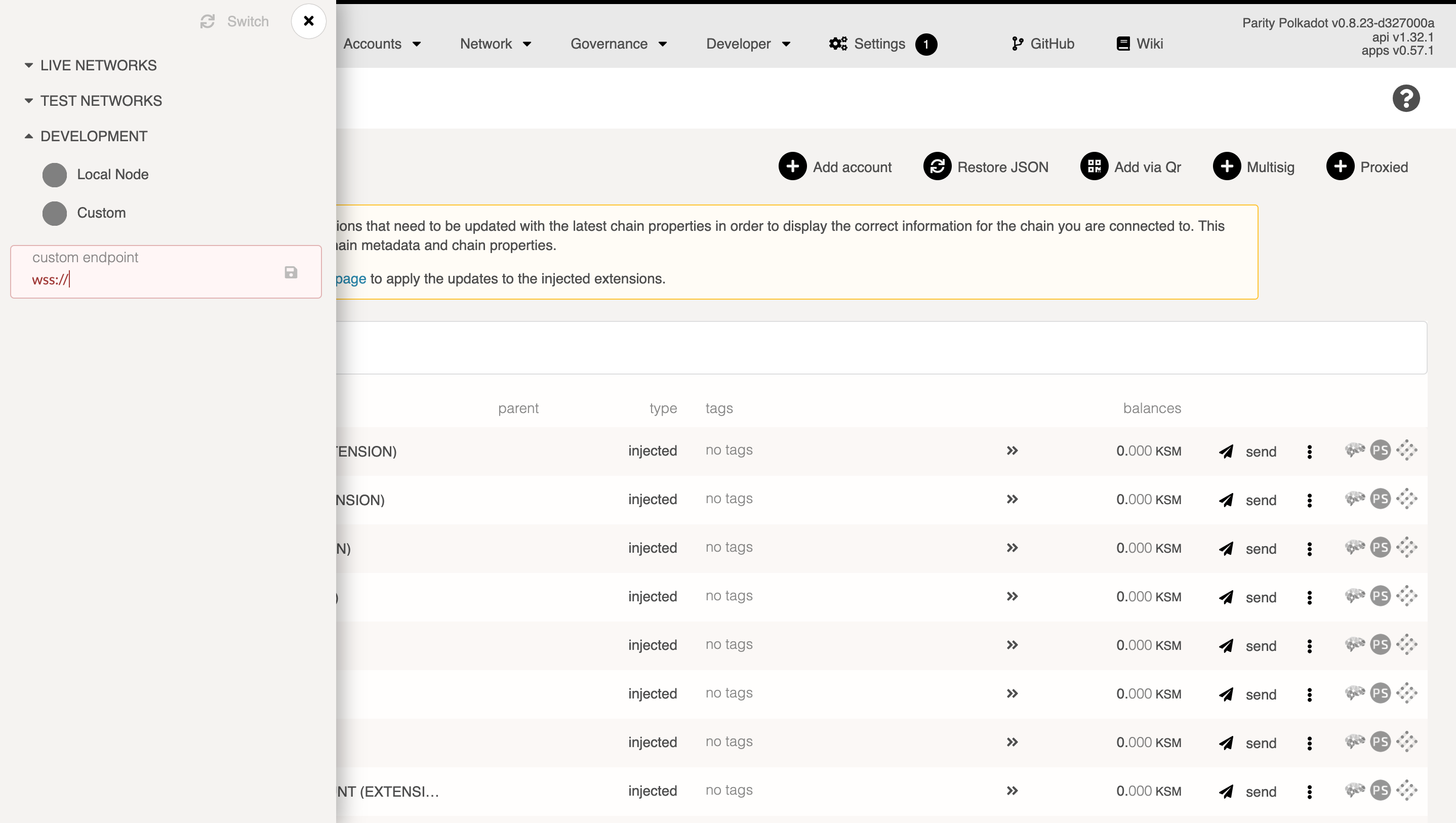Secure the WebSocket
Secure a WS Port
A non-secure ws port can be converted to a secure wss port by placing it behind an SSL-enabled proxy. This can be used to secure a bootnode or secure a RPC server. The SSL-enabled apache2/nginx/other proxy server redirects requests to the internal ws and converts it to a secure (wss) connection. For this, you will need an SSL certificate for which you can use a service like letsencrypt or self-signing.
Obtaining an SSL Certificate
One easy way to get a free SSL certificate can be achieved by following the LetsEncrypt instructions (nginx/apache). This will auto-generate an SSL certificate and include it in your configuration.
Alternatively, you can generate a self-signed certificate and rely on the raw IP address of your node when connecting to it. This is not preferable since you will have to whitelist the certificate to access it from a browser.
sudo openssl req -x509 -nodes -days 365 -newkey rsa:2048 -keyout /etc/ssl/private/selfsigned.key -out /etc/ssl/certs/selfsigned.crt
sudo openssl dhparam -out /etc/ssl/certs/dhparam.pem 2048
Installing a Proxy Server
There are a lot of different implementations of a WebSocket proxy, some of the more widely used are nginx and apache2, for which configuration examples provided below.
Nginx
apt install nginx
In an SSL-enabled virtual host add:
server {
(...)
location / {
proxy_buffers 16 4k;
proxy_buffer_size 2k;
proxy_pass https://localhost:9944;
proxy_http_version 1.1;
proxy_set_header Upgrade $http_upgrade;
proxy_set_header Connection "Upgrade";
proxy_set_header Host $host;
}
}
Optionally some form of rate limiting can be introduced:
http {
limit_req_zone "$http_x_forwarded_for" zone=zone:10m rate=2r/s;
(...)
}
location / {
limit_req zone=zone burst=5;
(...)
}
Apache2
You can run it in different modes such as prefork, worker, or event. In this example, we use event which works well on higher load environments but other modes are also useful given the requirements.
apt install apache2
a2dismod mpm_prefork
a2enmod mpm_event proxy proxy_html proxy_http proxy_wstunnel rewrite ssl
The mod_proxy_wstunnel provides support for the tunneling of web socket connections to a backend websockets server. The connection is automatically upgraded to a WebSocket connection. In an SSL-enabled virtualhost add:
(...)
SSLProxyEngine on
ProxyRequests off
ProxyPass / ws://localhost:9944
ProxyPassReverse / ws://localhost:9944
Older versions of mod_proxy_wstunnel do not upgrade the connection automatically and will need the following config added:
RewriteEngine on
RewriteCond %{HTTP:Upgrade} websocket [NC]
RewriteRule /(.*) ws://localhost:9944/$1 [P,L]
RewriteRule /(.*) https://localhost:9944/$1 [P,L]
Optionally some form of rate limiting can be introduced:
apt install libapache2-mod-qos
a2enmod qos
And edit /etc/apache2/mods-available/qos.conf
# allows max 50 connections from a single ip address:
QS_SrvMaxConnPerIP 50
Connecting to the Node
Open Polkadot-JS UI and click the logo in the top left to switch the
node. Activate the "Development" toggle and input your node's address - either the domain or the IP
address. Remember to prefix with wss:// and if you're using the 443 port, append :443, like so:
wss://example.com:443.

Now you have a secure remote connect setup for your Substrate node.